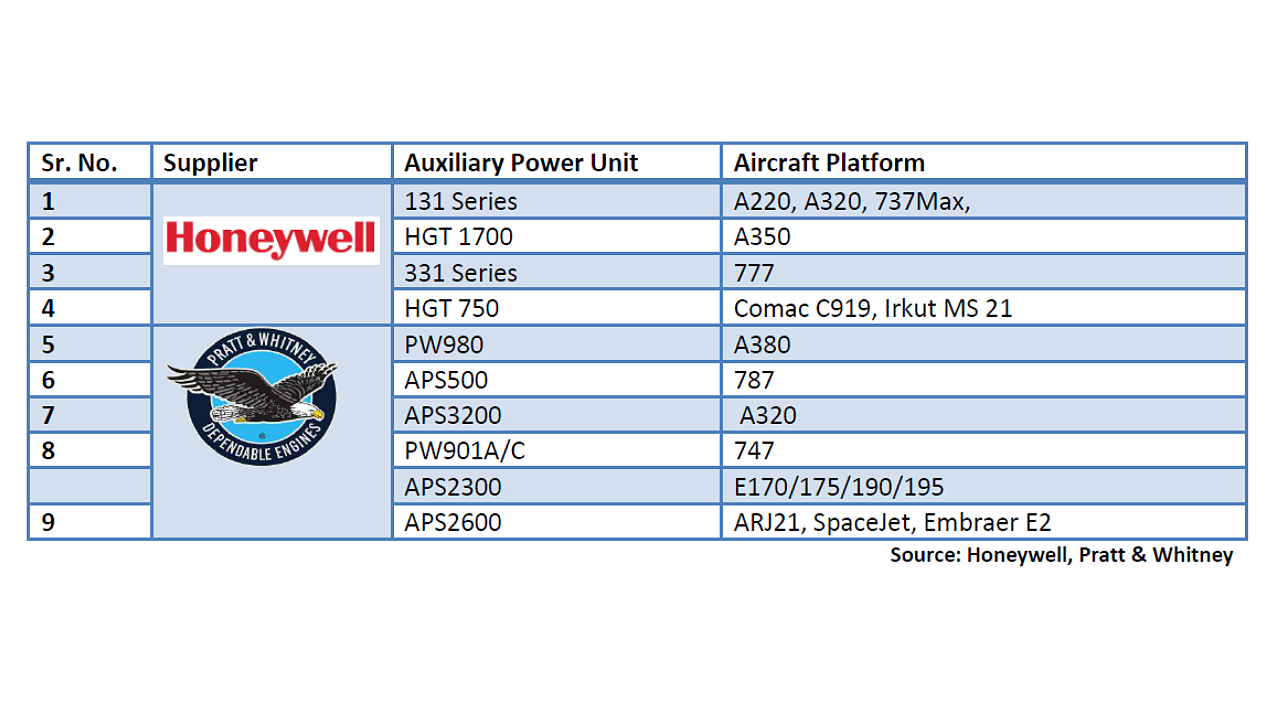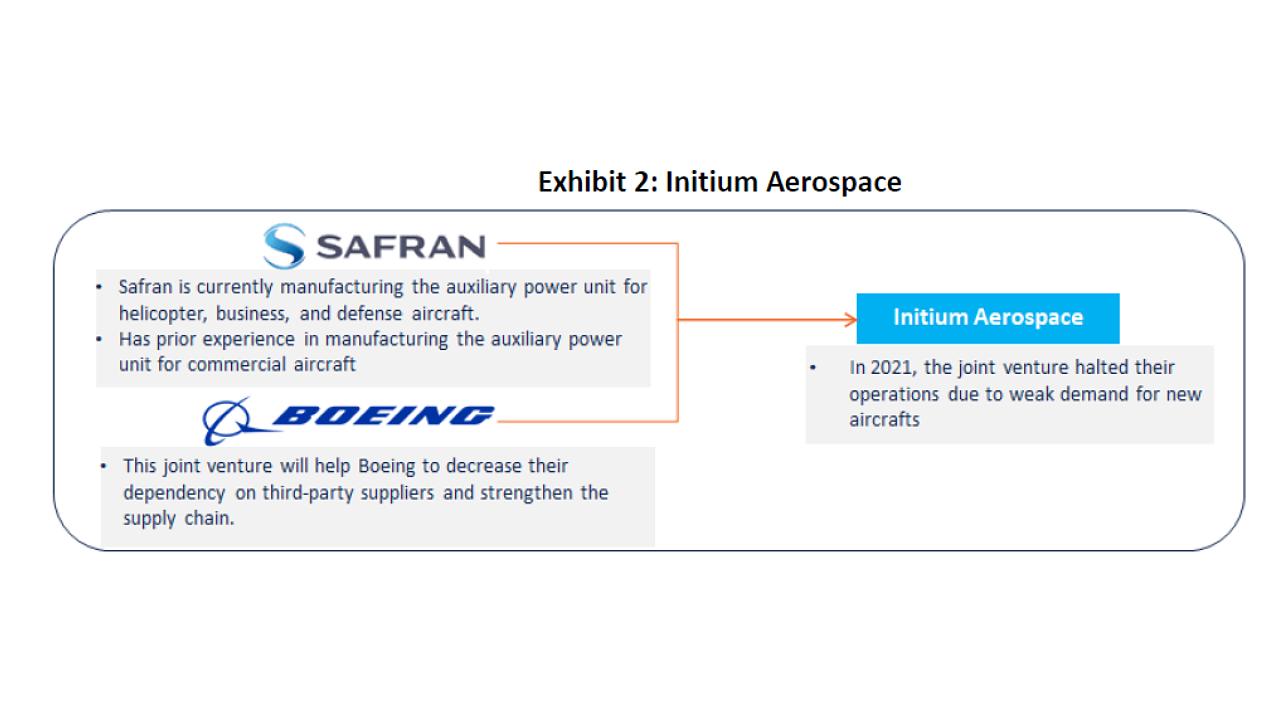
The global commercial aircraft auxiliary power unit (APU) is a unique market as only two companies are present in this segment – Pratt & Whitney and Honeywell. They enjoy a market duopoly status, with Honeywell enjoying 70% of the market share, whereas Pratt and Whitney hold 30%. This duopoly limits the negotiating power of the aircraft OEMs as they have no options but to choose from either of the two suppliers.
Pratt & Whitney and Honeywell have well-established contracts for APUs in commercial aircraft. Honeywell is the sole supplier of the APUs for all five narrow-body aircraft, including the A320, Boeing 737 Max, A220, and upcoming Comac C919, and Irkut MC-21. Among wide body aircraft, they supply the APUs for A350 and Boeing 777.
In India, both low-cost carriers (LCC) and full-service carriers (FSC) currently operate a fleet of Boeing and Airbus aircraft. It is the narrow-body aircraft – 737 Max and A320 Neo family – that dominate the aircraft orders. Honeywell supplies the APU on both narrow-body aircraft. This signifies that the company will generate revenue from the line-fit and benefit from the APUs aftermarket service contracts.
On the other hand, Pratt & Whitney's APU isn’t as prevalent on commercial aircraft platforms. They are the sole source for the auxiliary power unit on A380, 747, and 787 and have a strong footprint in the regional jet segment, courtesy of their APS2300, which is designed for regional jet aircraft. This APU is currently used on Embraer's E170/175/190/195 regional jet fleet. Their latest APU helped the company win the contracts on the latest regional jets like ARJ21, Embraer E2, and SpaceJet.

Emerging Threats To The Duopoly
After more than two decades, Safran is making a comeback along with Boeing to compete in an established market. In 2018, Boeing and Safran formed a joint venture named Initium to manufacture an auxiliary power unit. Both companies own 50% share in the new joint venture, which received clearance from the European Union in 2018.
Currently, Safran manufactures APUs for helicopters and business jets along with some military aircraft. The company previously manufactured APUs for commercial aircraft in a joint venture with Sunstrand named Auxiliary Power International Corporation until Safran's subsidiary Labinal's exit in 1996.
Safran is already working on a joint venture with GE Aviation, CFM, to manufacture jet engines for commercial aircraft. The company has manufactured the LEAP engine, the sole engine supplier for 737 Max, and competes with Pratt & Whitney's GTF (Geared Turbofan) on A320Neo. Safran is currently targeting the commercial aircraft APU market by teaming with a US-based partner, which may help them win contracts in Europe and USA.

Boeing has been looking for an alternative to their current suppliers on a vast range of systems. They have started working in-house on the actuators, nacelles, and aircraft seats. They are now targeting the APU market to apply pressure on their current suppliers. The company was also exploring the option to equip the 737 Max with the latest APU manufactured by the new joint venture. However, this strategy didn't go according to plan due to the 737 Max saga, followed by the pandemic, which reduced air travel demand. When the market reversed due to weak demand for new aircraft, their operating margins hit, resulting in a burden on Boeing's fixed costs.
In 2021, the joint venture Initium halted its development programme due to low demand for new aircraft. Another primary reason is that Boeing cannot come up with the new mid-market airplane (NMA).
According to Frost & Sullivan's study “Post-pandemic Growth Opportunity Analysis of the Global Airport & Airline Industry”, the conservative forecast showcases that airline revenue is expected to reach 2019 levels (pre-pandemic) only by 2024. This signifies a minimal chance for the company to come forward and produce the APU soon.
All-Electric Auxiliary Power Unit: A Game-Changer?
Post-2024, once air travel recovers, if the joint venture can develop a piece of new and modern equipment like an all-electric APU, this could be a game-changer. This would also allow Boeing to replace the old and traditional jet fuel-powered APU. This all-electric APU will save a lot of money for the airlines on jet fuel and help them achieve the goal of reducing their carbon footprint. Therefore, current APU suppliers need to focus more on R&D and develop an all-electric aircraft, or else the commercial aircraft APU market will no longer remain a duopoly market.
About the Author: Waseem Ahmed Khan is an Industry Analyst, Aerospace & Defense Practice at Frost & Sullivan.
NB: This article is a part of our Knowledge Series, authored by experts from Frost & Sullivan. All images are representational in nature.